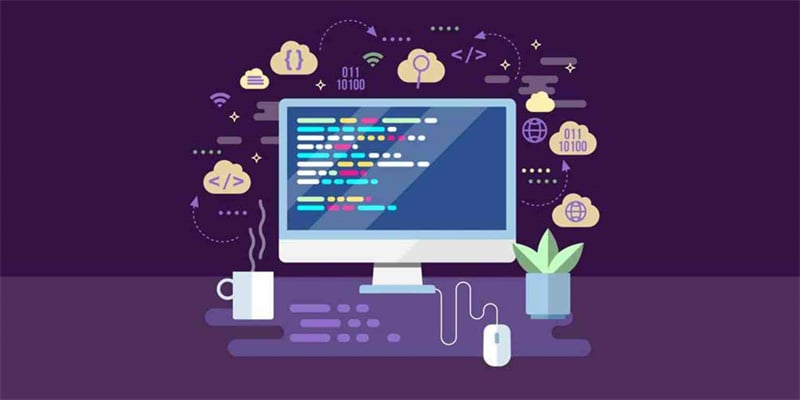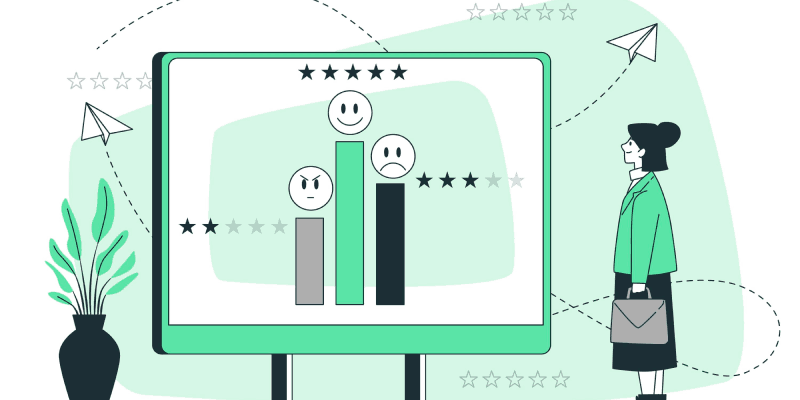Customer Success Playbooks: Definition, Types, Tips

SaaS businesses’ success depends on both customer acquisition and customer retention. In the past few years, many companies have started to invest more in their customer success efforts, ensuring existing customers achieve their desired goals and get maximum value from the SaaS product in a short period of time.
The customer success playbook serves as a comprehensive guide for SaaS companies that want to scale their customer success efforts by targeting and resolving multiple specific issues related to onboarding, troubleshooting, and upselling.
In the following article, we will cover different types of customer success playbooks and present you with a simple CS playbook template that you can create today to streamline the process.
What Is a Customer Success Playbook?
Playbook customer success or CS playbook, is a guide that outlines the best practices and strategies that can boost customer satisfaction and improve customer experience and success. A customer success team uses these playbooks as roadmaps that have proven effective in the domains of engagement, onboarding, customer retention, and building strong customer relationships.
Different Types of Customer Success Playbooks
There isn’t a single solution that fits all when it comes to CS playbooks, as each is carefully designed to address specific challenges within an organization. A well-crafted CS playbook should ensure that all members of the customer success team are working towards the common goal — improving satisfaction, retention, and loyalty.
Now, let’s see the most common types of customer success playbooks:
The Customer Success Onboarding Playbook
Onboarding playbooks include best practices and strategies for successful customer onboarding. It comes with carefully determined guidelines that ensure that new customers get onboarded quickly, smoothly, and successfully to ultimately drive long-term satisfaction and retention. It typically includes an overview of the onboarding processes and their defined goals, customer segmentation options, pre-onboarding preparation, the proper ways to welcome, educate, and train new customers, as well as post-onboarding customer support, use cases, and success stories.
The Customer Success Renewal Playbook
Renewal playbooks include the best practices for managing the renewal process with customers with the goal of ensuring high renewal rates, which are the backbone of a SaaS business. Just like the CS onboarding playbook, it consists of an overview of the renewal processes, defined goals, segmentation tips, pre-renewal processes like gathering customer data and highlighting the potential renewal opportunities and risks, as well as examples of good renewal processes that include engaging with the customers and presenting them with the best renewal options and post-renewal support tips that help customers transition smoothly to the new renewal period.
The Customer Success SaaS Journey Playbook
This playbook includes the best strategies for managing the customer journey within a SaaS business. The goal of the CS SaaS journey playbook is to help customers derive maximum value from your product in the earliest stages of their customer journey. It consists of an overview, defined stages of the customer lifecycle and main goals for each of them, segmentation, upsell and expansion opportunities, renewal processes, as well as customer advocacy opportunity identification.
As a bonus, we’ll tell you a few words about the Retention Playbook, which is surely one of the most important CS playbooks in SaaS. Its main aim is to help you understand customer retention rates, how they evolve over time, and why and how they affect the health and size of your customer base. It should help you realize which metrics are most predictive and how to use their data to create effective retention strategies.
The Customer Success Expansion Playbook
This one includes effective strategies for driving expansion opportunities with your existing customers. It consists of the same parts as the aforementioned playbooks, including tips on how to identify potential upsell opportunities, negotiate effectively, and provide unmatched post-expansion customer support. The idea is to drive more customer value and revenue through expansion opportunities to drive business growth.
The Customer Success Upsell Playbook
This playbook aims to help SaaS businesses identify, negotiate and capitalize on upsell opportunities with existing customers to drive more revenue. By using customer data, you can identify potential upsell opportunities and create a personalized approach that fits the needs of a certain segment.
How to Create a Customer Success Playbook in Akita?
Akita is a customer success platform that serves as a hub for all your customer data, allowing you to use the given data cleverly, track the CS metrics, and get a full overview of each customer segment to create a personalized strategy that matches their requirements.
After you define the goals you wish to achieve with Akita’s CS playbook, whether it is improving customer satisfaction, reducing churn, or something else, you should use Akita’s customer segmentation tool to categorize your customers. You can start Akita Playbooks manually or automatically when a contact or account enters a customer segment. You can also add multiple triggers to a single Playbook.
Akita comes with playbook creation tools that allow you to create playbooks for each stage of the customer journey.
You can track the customer success playbook’s key metrics and KPIs by using Akita’s analytics and reporting features. Use the data to refine your playbooks as you go.
Customer Success Playbook Templates
Creating a customer success playbook from scratch can be a daunting task if you don’t have clear instructions on how to do it. This is precisely why we are here today. We’ll provide you with a straightforward customer success playbook example that you can use to streamline customer success processes.
- Foundation
- This part should comprise the purpose of the playbook and the instructions on how to use it.
- Overview of the company
- In this part, include target market and customer segments along with essential products, features, or services. It is always a good idea to enlist your company’s values and mission.
- CS overview
- Define what’s customer success for your company and highlight the goals of the customer success team. Finally, include all the key CS metrics and KPIs like customer churn rate, renewal rate, monthly recurring revenue, net promoter score, etc.
- Stages of Customer Lifecycle
- Identify and note various customer lifecycle stages like adoption, renewal, onboarding, etc. Make sure to include the list of activities and goals related to each stage.
- Customer segmentation
- in SaaS, there are three types of customer segment categories that ensure the segments are stable and profitable – company size (large, medium, and small), active and inactive users, and value (low and high-value customers). Tailor the approach based on the given segment.
- CS strategies
- Onboarding is one of the essential stages in the customer journey, so make sure to include its best practices in this part. Besides onboarding, it is valuable to establish best practices for communication and engagement, along with upselling tips and tactics, which are all crucial for SaaS.
- Customer health monitoring
- Include key indicators and metrics of customer health like product usage, customer feedback, engagement, product renewals and upgrades, etc. Use tools like Akita for customer health monitoring and develop concrete plans for at-risk customers so you can react on time and prevent churn.
- Collecting customer feedback
- Include methods for gathering customer feedback.
- Advocacy
- Develop effective strategies for turning customers into advocates.
- Customer success team organization and training
- It is crucial to determine the roles and responsibilities of each CS team member so that everyone can be on the same page and work towards the same goal. Organize training sessions for the customer success managers.
- CS tools
- You can include various CS tools to automate the processes, improve customer data, and leverage customer data for actionable insights – customer health and feedback tools, analytics tools, CRM and help desk, etc.
- Success stories and case studies
- In this part, you can enlist the most valuable examples of successful CS initiatives.
- Epilogue
- In the last part, you can include additional resources, guides, and templates alongside key terms and additional explanations for them, if needed.
Conclusion
A customer success playbook serves as a comprehensive guide for overcoming a particular CS challenge that your team can rely on and use over and over, without overthinking (too much). Use customer data with CS tools like Akita, refine your CS playbooks continuously based on the insights, and never fail to deliver an exceptional customer experience that drives advocacy, customer retention, and loyalty.
Frequently Asked Questions
What are playbooks in customer success?
CS playbooks are documents that highlight the best practices and strategies for managing customer relationships and improving customer success.
What are the 4 pillars of customer success?
The four pillars of customer success include proactive engagement, a customer-centric approach, never-ending improvement, and metrics assessment.
What are the 4 stages of customer success?
The four stages of customer success are onboarding, adoption, expansion, and renewal.
How to make a CSM playbook?
To make a CSM playbook, you need to follow the steps – define objects, define customer strategies and lifecycle stages, identify key touchpoints in the customer journey, establish engagement and communication strategies, define key metrics, gather data, include strategies for CS process improvement based on the data, provide training for CS team, monitor and evaluate the playbook’s performance.








